The line between genius and insanity is a thin one, right? Well, the Swiss LMG25 was well build and effective, but the MP41 and MP41/44 fell off the edge into silliness. It was adopted in 1941 by the Swiss army, when they realized that they really ought to have a submachine gun.
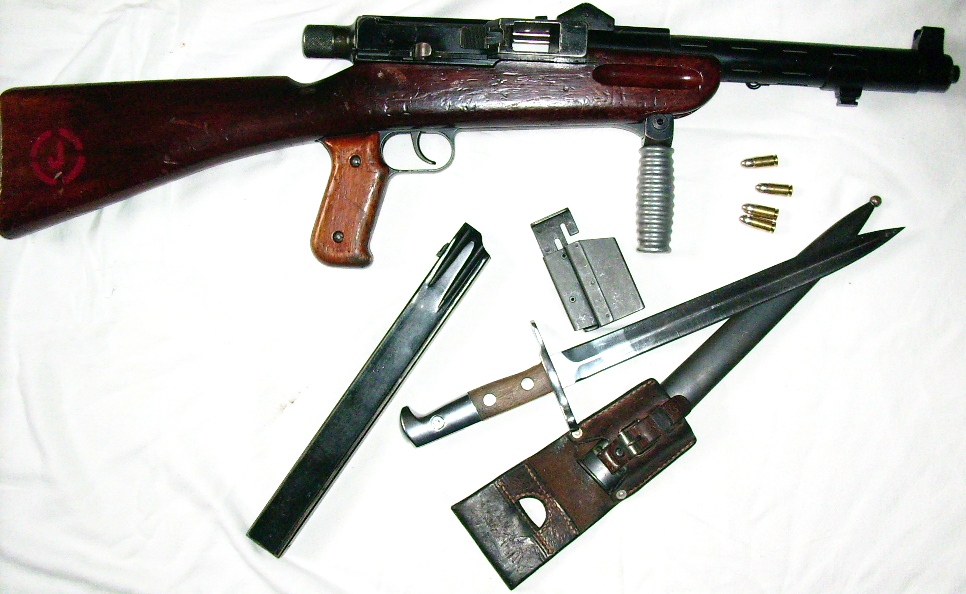
The MP41 (not to be confused with the German MP41, which was a completely unrelated gun) was designed by Adolf Furrer, who really, really like toggle locking actions. He had worked at Waffenfabrik Bern originally building Luger pistols and Maxim machine guns, and apparently developed a bit of a fixation on the system. A 9mm submachine gun like this ones does not really need to have a locked breech at all (most of the really good ones are simple blowback designs), but Furrer designed this to be recoil operated and toggle locked.
Upon firing, the barrel, barrel extension, and bolt assembly all move backwards a short distance, and a cam on the inside of the receiver forces the toggle joint to break, unlocking the action. At this point in most guns, the barrel would stop and the bolt would continue rearward under intertia, but the LMG25 is different. The barrel and bolt parts remain connected at all times – so the barrel continues recoiling backwards under the bolt is fully open. The geometry of the toggle lock legs is such that the bolt is accelerated open faster than the barrel moves backwards, allowing the empty case to clear the chamber and eject. At the end of travel, a recoil spring in the rear pushes the whole assembly forward, forcing the bolt shut again and chambering a new cartridge. (yes, it’s so similar to the LMG25 that I copied that description verbatim from my LMG25 post)
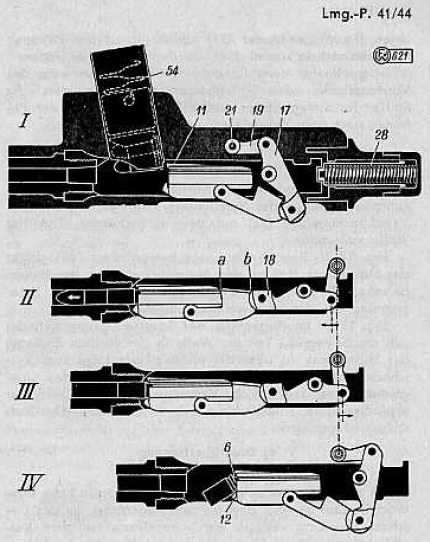
Furrer claimed that his design would be quick and easy to put into production, which was pretty much a load of high-quality baloney. The gun turned out to be one of the most expensive production submachine guns ever made, and only a few were built before the design was modified to the 41/44 standard, which simplified many elements. Ultimately, only about ten thousand were made before the Swiss threw up their hands and focused on build the MP43/44, which was a far simple licensed copy of the Finnish M31 (Suomi) submachine gun.
Visually, the MP4/44 can be distinguished from the early MP41 by having a bayonet lug, two-position fixed rear sight, vertical forward grip, and protective wings on the front sight.
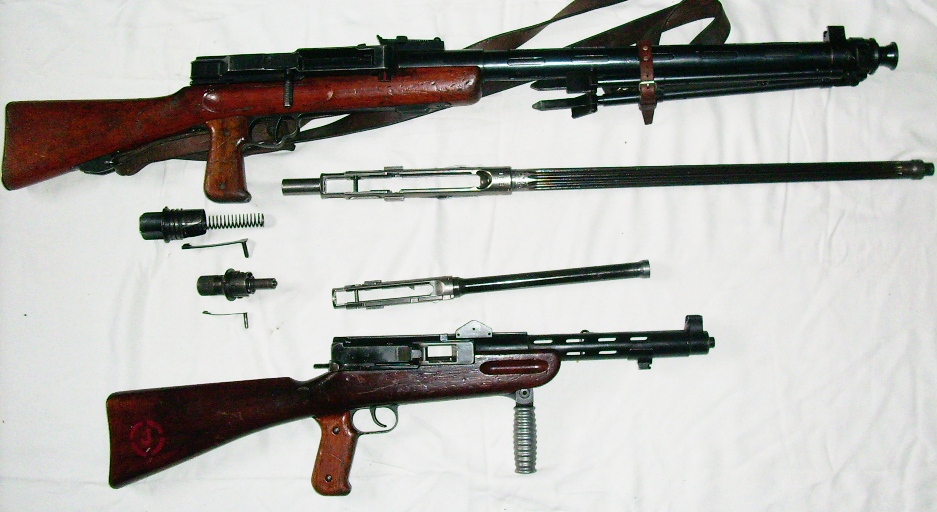
Manuals
We have two editions of the Swiss Army submachine gun manual, one from 1944 and one from 1955. These cover both the MP43/44 (Suomi copy) and the MP41/44.
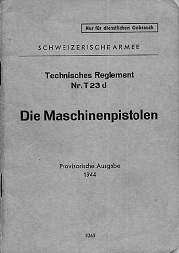
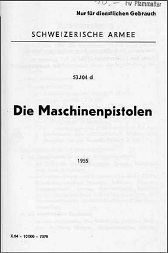

One thing I do not understand is the placement of the magwell on the right side of the firearm. For your average right handed shooter its easier to maintain the strong hand on the grip and swap mags with the left. Putting the magwell on the left would have made more sense. With it on the right it requires removing the strong hand from the grip, removing the mag from the magwell and fitting a new one. This disrupts the firing position and makes it difficult to keep the weapon aimed. On another related note, the mags are kept in a “pouch” made of aluminum or steel in the form of a box holding 3 mags in each “pouch”. These two boxes are tied together by a strap which is worn around the back of the neck and the bottoms of the boxes are attached to the soldiers belt with a couple leather straps. The mag boxes are equipped with springs inside similar to those in a bayonet scabbard. The springs keep the mags from rattling around but make it tough to remove the mags from the box. I would find it hard to imagine getting into a moving firefight with one of these where frequent mag changes are necessary.
Biff
Furrer MP41/44 (Lmg-Pist 41)
W+F Switzerland
9 mm Para 40 rounds
Barrel 270 mm
Lenght 760 mm
Weight 2,5 kg
Wow that MP41/44 looks like a German Mp 34 with pistol grip and handle attached to it.
been a while since anyone has added anything. I tripped over this link that has some interesting comments. Some of which paralleled my own.
https://wwiiafterwwii.wordpress.com/2016/07/31/mp-4144-submachine-gun-post-wwii-use/
After a bit of experience with the actual gun I find that a lot of the hype about them is crap. Despite the costs and time to make them they were actually a pretty good subgun. I can see where spending the money on them over a simpler gun was a poor choice but for the purpose intended they did just fine.
Biff